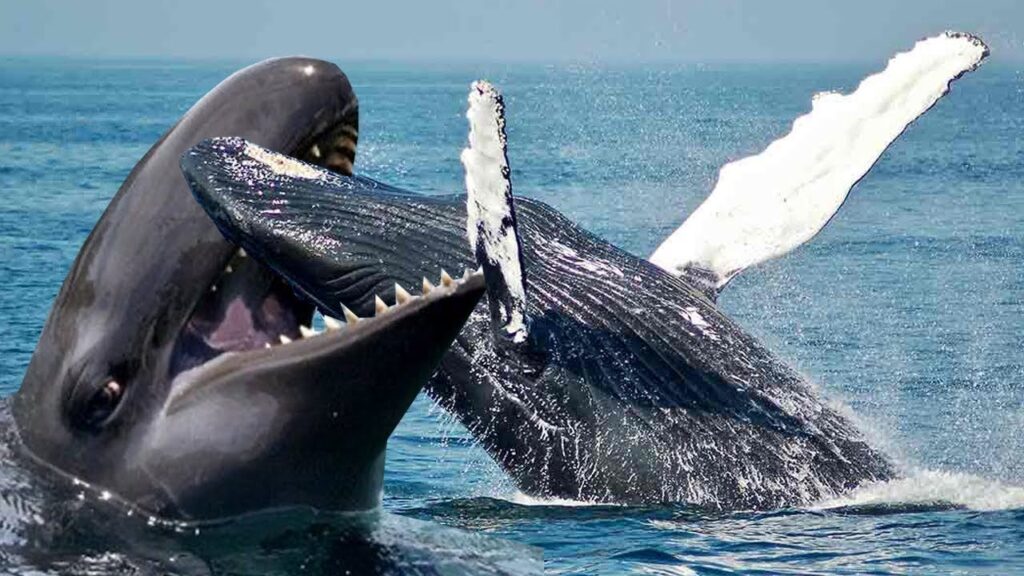
The blue whale and the sperm whale are two of the most fascinating marine mammals, each with unique adaptations and characteristics that allow them to thrive in the ocean. While both species are among the largest animals on Earth, they have distinct differences in size, feeding habits, social behavior, and habitats. This article provides an in-depth comparison of blue whales and sperm whales, exploring their physical traits, ecological roles, and conservation statuses.
Overview of Blue Whales
Blue whales (Balaenoptera musculus) are the largest animals to have ever existed on Earth. They can reach lengths of up to 100 feet (30 meters) and weigh as much as 200 tons (181 metric tonnes). Blue whales primarily inhabit deep ocean waters and are known for their gentle nature and filter-feeding habits.
Physical Characteristics
- Size: Blue whales can grow between 82 to 105 feet (25 to 32 meters) in length.
- Weight: They typically weigh between 100 to 150 tons (90 to 136 metric tonnes).
- Coloration: Their skin is a mottled blue-gray color, which appears blue underwater.
Overview of Sperm Whales
Sperm whales (Physeter macrocephalus) are the largest toothed whales and are known for their distinctive block-shaped heads. Males can grow up to 67 feet (20 meters) long and weigh around 45 tons (41 metric tonnes). Sperm whales are deep divers, primarily preying on squid and other deep-sea creatures.
Physical Characteristics
- Size: Males can reach lengths of about 36 to 52 feet (11 to 16 meters), while females are generally smaller.
- Weight: Adult males can weigh between 40 to 60 tons (36 to 54 metric tonnes).
- Coloration: Their skin is typically dark gray with a wrinkled appearance.
Key Differences Between Blue Whales and Sperm Whales
The following table summarizes the primary differences between blue whales and sperm whales:
| Feature | Blue Whale | Sperm Whale |
|---|---|---|
| Scientific Name | Balaenoptera musculus | Physeter macrocephalus |
| Average Length | 82 – 105 feet (25 – 32 meters) | 36 – 67 feet (11 – 20 meters) |
| Average Weight | 100 – 150 tons (90 – 136 metric tonnes) | 40 – 60 tons (36 – 54 metric tonnes) |
| Diet | Krill and small fish | Squid and deep-sea fish |
| Feeding Mechanism | Filter-feeding using baleen plates | Hunting using teeth |
| Social Structure | Often solitary or in small groups | Lives in complex social pods |
| Diving Depth | Typically up to 500 meters | Can dive over 2,000 meters |
| Lifespan | Approximately 80 – 90 years | Up to 70 years |
| Conservation Status | Endangered | Vulnerable |
Feeding Habits
Blue Whales
Blue whales are filter feeders that consume vast quantities of krill—tiny shrimp-like crustaceans. They use baleen plates in their mouths to filter food from the water. During feeding season, a blue whale can consume up to four tons of krill per day.
Sperm Whales
Sperm whales are apex predators that primarily hunt large squid, including giant squids, as well as fish. They possess large conical teeth on their lower jaw that they use to grasp prey. Their hunting strategy involves deep diving—sperm whales can dive to depths exceeding 2,000 meters in search of food.
Social Behavior
Blue Whales
Blue whales tend to be solitary or travel in small groups, often consisting of a mother and her calf. Their social interactions are not as complex as those of sperm whales. Communication among blue whales occurs through low-frequency vocalizations that can travel long distances underwater.
Sperm Whales
Sperm whales exhibit more complex social structures. They live in matrilineal pods composed of females and their young, while adult males often leave these pods when they reach maturity. The social bonds within pods are strong, with members cooperating during foraging activities.
Reproduction
Blue Whales
Blue whales typically reach sexual maturity between the ages of 5 to 10 years. After a gestation period of about 10 to 12 months, females give birth to a single calf that weighs around two tons at birth. The young blue whale relies on its mother’s milk for about six months before transitioning to solid food.
Sperm Whales
Sperm whales also reach sexual maturity at around the age of 7 to 13 years. Females usually give birth every four to six years after a gestation period of approximately 14 to 16 months. Calves stay with their mothers for several years, learning essential survival skills.
Conservation Status
Both species face threats from human activities such as whaling, ship strikes, entanglement in fishing gear, and climate change.
- Blue Whales: Classified as endangered due to historical whaling practices that drastically reduced their populations. Conservation efforts focus on protecting their habitats and reducing ship strikes.
- Sperm Whales: Listed as vulnerable; they were heavily targeted during commercial whaling but have shown signs of recovery in some areas since the moratorium on whaling was established.
Conclusion
In summary, while both blue whales and sperm whales are remarkable marine mammals with impressive adaptations for life in the ocean, they differ significantly in size, feeding habits, social structures, and conservation statuses. Blue whales hold the title for being the largest animals on Earth, relying on filter feeding for sustenance. In contrast, sperm whales are adept hunters capable of diving into the depths of the ocean in pursuit of squid.Understanding these differences enhances our appreciation for these magnificent creatures and underscores the importance of ongoing conservation efforts aimed at protecting them from human-induced threats. As we continue to study these species, we gain valuable insights into marine ecosystems and the need for sustainable practices that ensure their survival for future generations.





